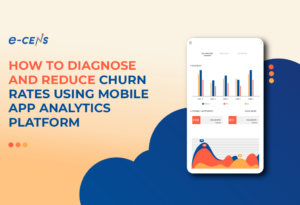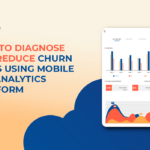- Focus on App Launch Time: Users expect apps to load quickly. Slow launch times can lead to frustration and app abandonment. The blog post recommends techniques to improve launch time such as reducing unused assets and optimizing the critical rendering path.
- Track User Engagement and Retention Rates: Businesses should monitor metrics like Net Promoter Score (NPS) and churn rate to understand user satisfaction and how many users are abandoning the app. The blog post also suggests strategies to improve retention such as sending targeted messages and personalizing the user experience.
- Optimize Screen Loading Time: Users expect apps to load quickly. The blog post recommends ways to improve screen loading time such as optimizing file sizes and using a Content Delivery Network (CDN).
- Minimize Error Rates and Crashes: Mobile app crash reporting tools can help identify and fix bugs that can lead to crashes and errors. The blog post also highlights the importance of regular monitoring and updates to improve app stability.
Understanding mobile app performance metrics is crucial for your business’s success in the business regimen of 2024. With billions of smartphone users around the globe, mobile apps’ power lies in their functionality as a direct channel to engage customers and drive growth.
This article will explore the top mobile app KPIs, including mobile application performance monitoring and app success metrics, essential for optimizing user experience and achieving business objectives.
What Are Mobile App Metrics?
Mobile app metrics are:
“The essential tools that measure various aspects of an app’s performance and user engagement.”
These metrics provide invaluable insights into how well your app meets business objectives and user expectations.
Key Performance Indicators (KPIs)
To guarantee your app’s success, it’s crucial to monitor a range of KPIs:
- Performance Metrics: Include app speed, network issues, and response times.
- User Engagement Metrics: Track downloads, active users, session intervals, and usage time to gauge engagement.
- Financial Metrics: Focus on revenue-related KPIs like Average Revenue Per User (ARPU) and Lifetime Value (LTV).
Understanding user interaction and satisfaction through metrics such as load times, app store rankings, and churn rates helps optimize the user experience.
In addition to this, such metrics help your business track the effectiveness of advertising campaigns and user acquisition strategies, including Cost per Install (CPI) and Return on Investment (ROI).
Detailed Breakdown of Metrics
- User Engagement: Includes DAU (Daily Active Users), MAU (Monthly Active Users), and metrics related to session behavior.
- Acquisition Metrics: Acquisition Metrics: Tracks user acquisition sources and measures marketing campaigns’ success.
- Performance Indicators: Focus on technical aspects like load times, error rates, and API latency.
You can make informed decisions that drive growth and improve your mobile app by continuously monitoring these metrics. Let’s take a deeper look!
- App Launch Time
Understanding the critical nature of app launch time is essential for enhancing user experience and retention. App launch time refers to:
“the period it takes for an app to become fully operational from the moment a user initiates it.”
This metric significantly impacts user satisfaction, as slow launch times can lead to frustration and app abandonment.
Key Metrics to Monitor
- Time to Initial Display (TTID): Measures the time until the app’s first screen is loaded.
- Time to Full Display (TTFD): Records the time taken for the app to become fully interactive.
Best Practices for Optimizing Launch Time
- Reduce Unused Assets: Streamline app resources by removing unused files and compressing necessary assets.
- Deferred Loading: Implement techniques like lazy loading to delay the loading of non-critical resources until they are needed.
- Optimize Critical Rendering Path: Prioritize essential activities and resources to speed up initial app loading.
- Efficient Code Practices: Minimize the impact of third-party libraries.
This one small factor directly influences engagement and retention rates. Hence, businesses should meet user expectations when it comes to speed and reliability.
2. User Engagement and Retention Rates
Understanding Key Metrics
Net Promoter Score (NPS): Measures customer satisfaction and loyalty, indicating the likelihood of users recommending your app.
Engagement Indicators:
- High Engagement Rates: Show that users find value in your app, increasing the likelihood of continued use and in-app purchases.
- Social Features: Integrating social elements can significantly boost engagement by encouraging users to interact and return.
Retention Metrics:
- 30-Day Retention Rates: Vary between 27% and 43% across industries, highlighting the importance of initial user experiences.
- User Retention Strategies: Effective communication in the first 30 days is crucial, including targeted messages and personalized engagements.
Analyzing the User Behavior
Session and Churn Metrics:
- Average Session Length: Typically around five minutes, with longer sessions indicating deeper engagement.
- Churn Rate Calculation: This helps identify how many users stop using the app, which is critical for understanding attrition.
User Interaction Enhancements:
- Inclusivity and Problem-Solving: Enhancing app inclusivity and functionality can improve stickiness and daily usage.
- UXCam Utilization: Tracks real-time session lengths and churn, providing insights to refine user interaction.
Strategic Engagement Approaches
Retention and Growth Strategies:
- Engagement Triggers: Setting up triggers for re-engagement can effectively bring users back to the app.
- Retention through Personalization: Personalized experiences are key in maintaining user interest and reducing drop-off rates.
Advanced Metrics for Informed Decisions:
- Stickiness and Retention Calculations: Provide a clear picture of user engagement and long-term app viability.
- Targeted Retargeting Campaigns: Identifying key user actions that correlate with retention can guide focused marketing efforts.
Monitoring and optimizing these mobile app performance metrics can significantly enhance user engagement and retention, fostering a loyal user base and driving sustained app growth.
3. Screen Loading Time
Understanding the Impact of Screen Loading Time
Users typically expect apps to load within 2-3 seconds. Delays beyond this expectation can significantly increase user abandonment rates.
Factors such as server speed, network quality, and resource-heavy content like high-resolution images and videos significantly affect load times.
Key Factors Influencing Load Time
- Server Performance: A slow server can delay content delivery to the app.
- Network Issues: Poor connectivity and slow network speeds can increase load times.
- Resource-Heavy Files: Large files require more time to load, slowing down the overall app performance.
Strategies to Enhance Screen Loading Speed
- Optimize File Sizes: Try reducing the size of images and videos without compromising quality.
- Improve Server Response: Choose high-quality servers and use caching to enhance speed.
- Utilize CDNs: Content Delivery Networks help load content faster across different geographical locations.
Tools and Techniques for Monitoring and Improving Load Times
- Lazy Loading: Delaying the loading of non-critical resources can improve initial load times.
- Efficient Coding Practices: Again, streamlining code and reducing the impact of third-party libraries can significantly boost performance.
Businesses can ensure their mobile apps meet user expectations for quick and responsive experiences by focusing on such areas, which are crucial for maintaining engagement and minimizing user frustration.
4. Error Rate and Crash Analytics
Mobile App Crash Reporting Tools
Mobile app crash reporting tools are essential for pinpointing the root causes of issues within your app. These tools not only alert you in real-time when crashes occur but also offer additional features such as:
- App Performance Monitoring: Keeps track of your app’s operational efficiency.
- User Experience Feedback: Gathers input directly from users to help improve the app.
- In-App Support Capabilities: Provides support resources within the app.
- Data Visualization Tools: Helps visualize complex data for better understanding.
- Custom Analytics and KPIs: Allows for monitoring specific metrics that matter to your business.
Importance of Regular Monitoring and Updates
To minimize crash rates effectively, consider these strategies:
- Regular Monitoring: Keep a constant watch on your app’s performance to catch and resolve issues swiftly.
- Effective Testing: Implement thorough testing phases to detect potential crashes before they affect users.
- User Feedback: Utilize feedback to identify less obvious issues that may not be caught during testing.
- Regular Updates: Continuously improve your app by fixing bugs and updating features to enhance stability and performance.
Common App Issues and Their Prevalence
Understanding common app issues can guide your monitoring and testing efforts. The most frequently encountered problems include:
- Performance Issues: Experienced by 86% of apps.
- App Crashes/Freezes: Affects 50% of apps.
- Slow App Speed: Reported in 45% of cases.
- Dropped Connections: Occurs in 30% of instances.
By focusing on these areas and utilizing the right tools and strategies, you can significantly reduce error rates and crashes, leading to a smoother, more reliable app experience for your users.
5. Network Performance
Network performance is a pivotal factor in the user experience of mobile apps, with 66% of users rating it as very important. An overwhelming 86% of users have encountered network-related issues while using mobile apps over the past six months. These issues occur in various environments, including at home (67%), in vehicles (33%), and during shopping (22%), underscoring the need for robust mobile app performance across different settings.
Frequently Asked Questions (FAQs)
What are the key metrics to consider for mobile app success?
Essential metrics for evaluating mobile app success include the number of downloads, the count of active users, the retention rate, and the average revenue per user (ARPU). Monitoring these metrics helps developers understand the app’s performance and identify areas for enhancement to better the user experience.
What methods are used to assess mobile app performance?
To assess mobile app performance, consider the following metrics: user acquisition, which tracks new downloads and installations; user engagement, which looks at how users interact with the app; and app store ratings and reviews, which offer insights into the app’s quality and usability.
What does KPI stand for in the context of mobile apps?
KPI stands for Key Performance Indicators, which are quantifiable measures used to track and assess the performance and success of a mobile app. KPIs are crucial for understanding how well an app is achieving its objectives.
After installing an app, which in-app performance metrics are vital to measuring a campaign’s success?
Post-installation, it is important to monitor several in-app performance metrics to gauge a campaign’s success. These include user acquisition metrics, user engagement metrics, user feedback metrics, acquisition source, funnel analysis, demographics, A/B testing metrics, as well as metrics related to social sharing and virality.








